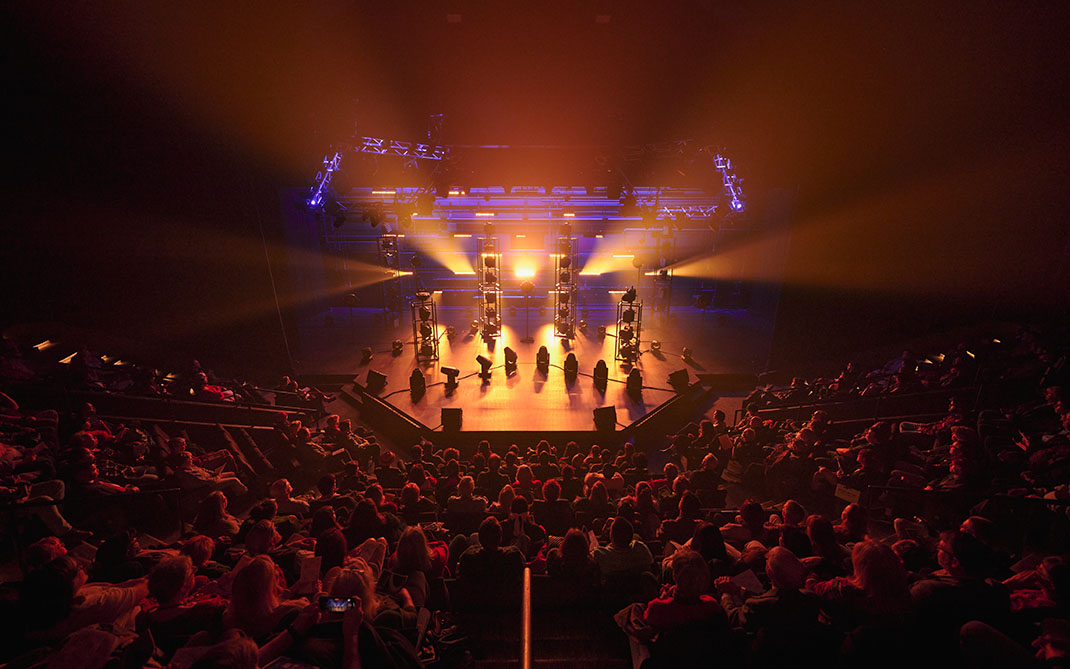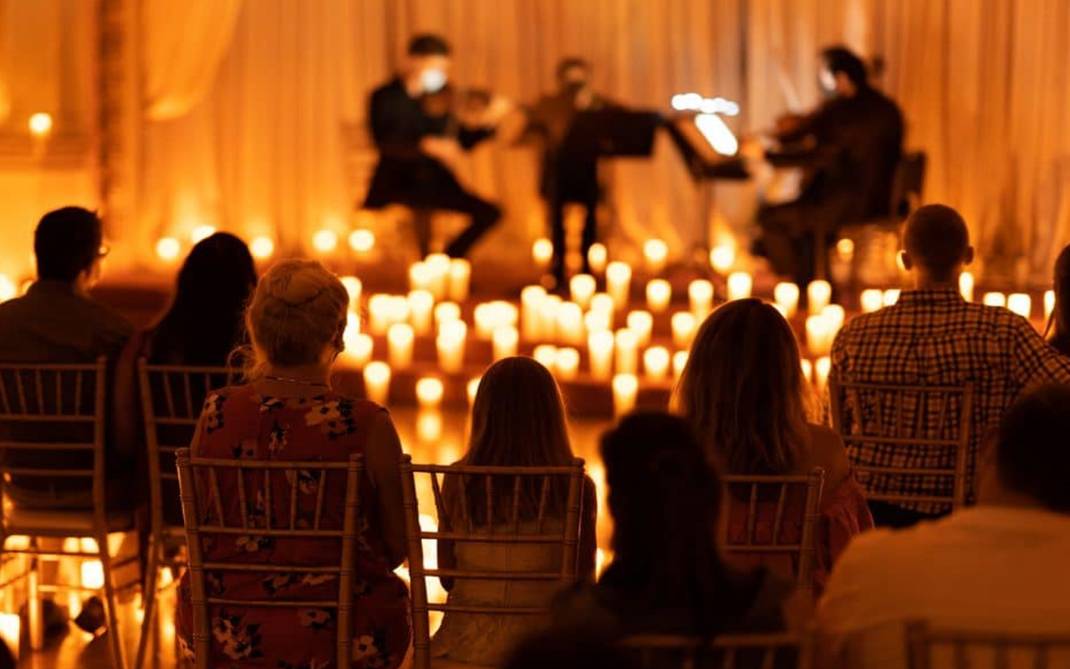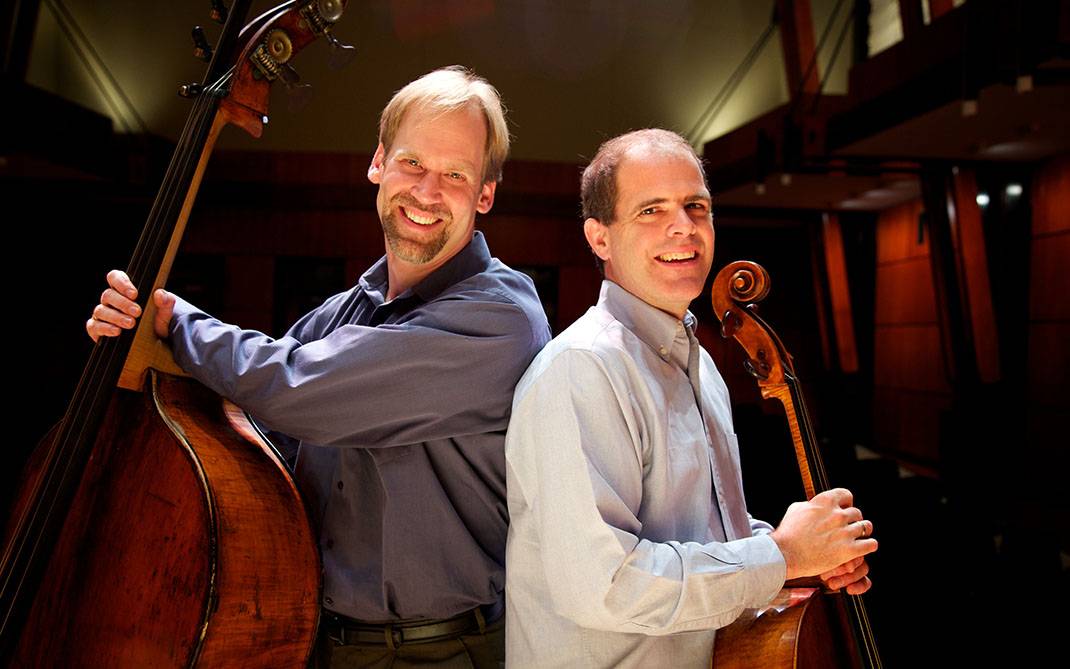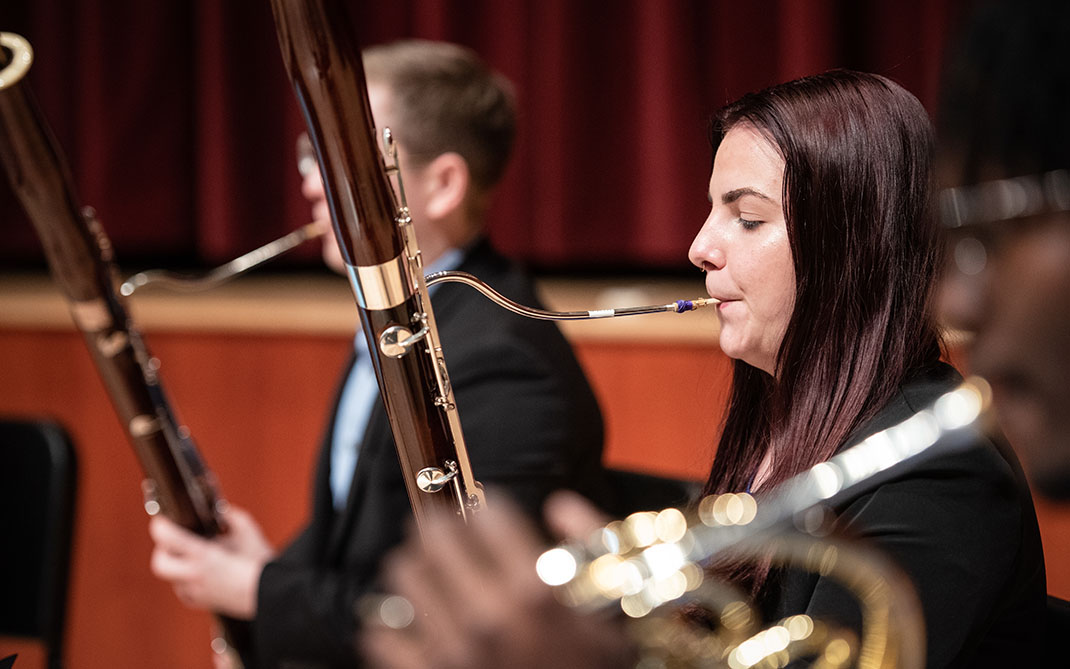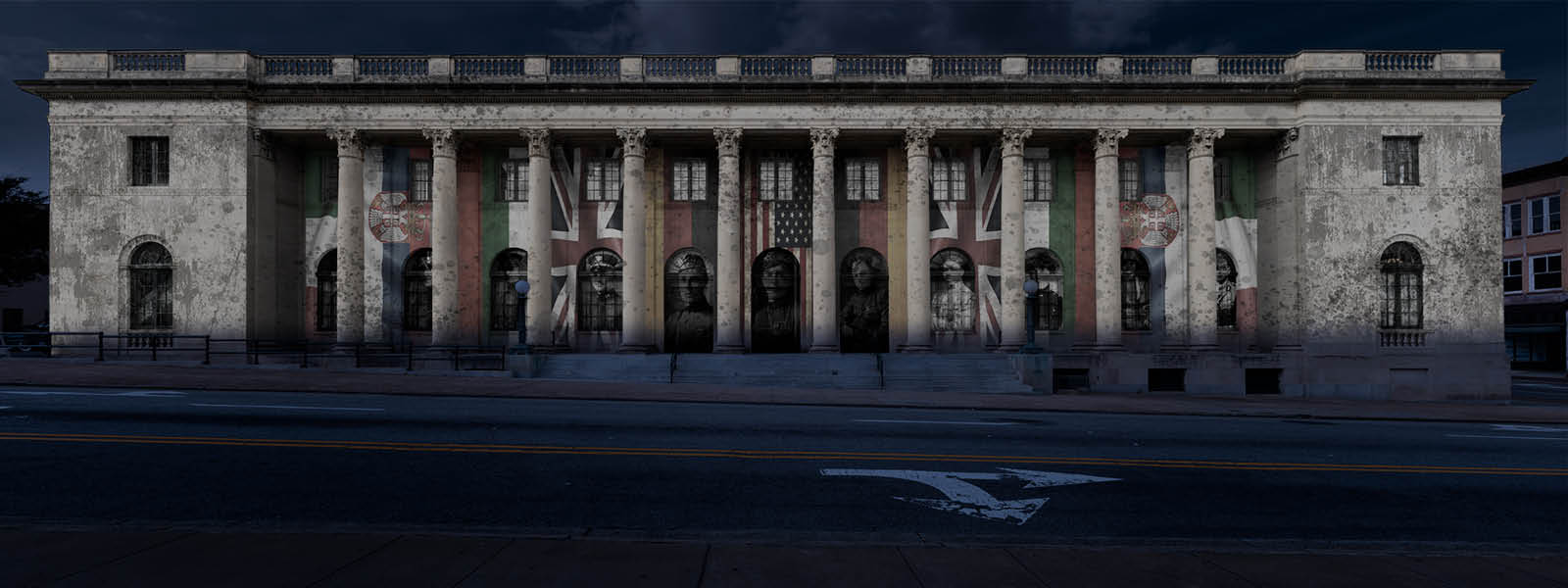Winston-Salem Light Project celebrates 10th anniversary
Commemorating its 10th anniversary, the Winston-Salem Light Project (WSLP) returns to its original location, the historic Millennium Center, and calls attention to an even more important anniversary: the end of World War I. Presented by the senior lighting designers in the School of Design and Production at the University of North Carolina School of the Arts, the annual outdoor lighting installation takes place from 8 to 11 p.m. Tuesday through Saturday, April 24-28, at 101 West Fifth St. in downtown Winston-Salem.
Titled “MCX” (M for Millenium Center, C for the 100th anniversary of the end of WWI, and X for 10th anniversary of WSLP), this year’s event will be the most complex light project to date, says founder and executive artistic director Norman Coates, who directs UNCSA’s lighting program. “Student artists will explore universal themes surrounding war, utlilizing up to eight large-format projectors, with images blended and mapped on the building,” he said. “Three-dimensional projections will cover the entire 200-by-40-foot Fifth Street façade of the Millennium Center.”
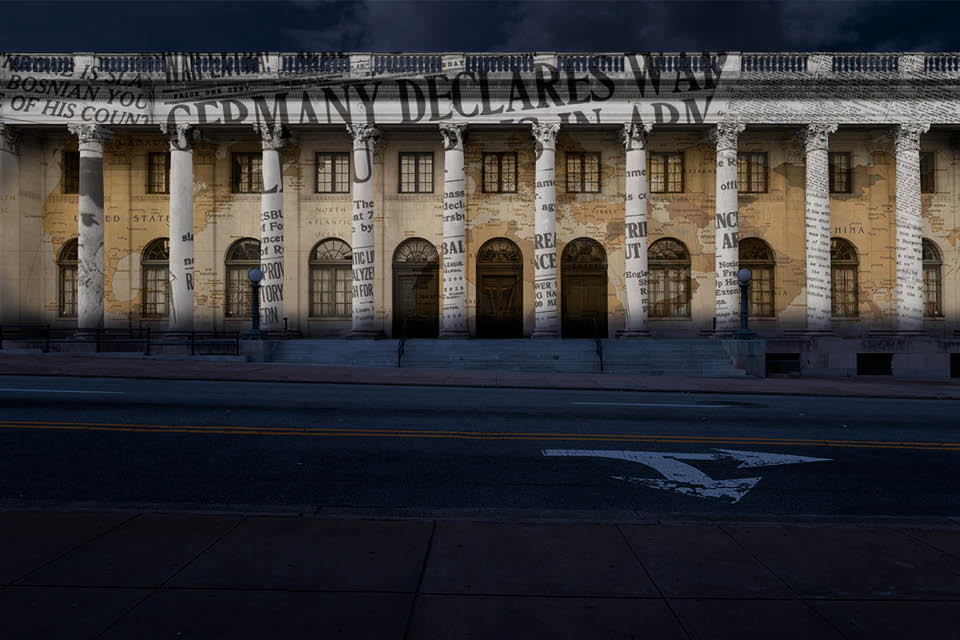
Lighting designer Ridley Walker from West End, N.C., says the project is more story-driven than in the past, with images and sound that illustrate themes including the home front, the soldier’s experience, propaganda and nationalism.
“We start with an image of the Hall of Mirrors in Versaille, where the treaty was signed to end the war,”” she says. “Then we flash back to newspaper accounts of what started the war: the Archduke being killed. We show the war effort on the home front, with women working in factories to support the effort, recruiting stations to enlist soldiers, the patriotism.”
The soldiers’ experience is based on first-person accounts including letters and stories found through extensive research, with images of soldiers walking through the trenches and watching explosions overhead. The final images illustrate the ending of the war, America welcoming its soldiers home, nation rebuilding and shifting national borders.
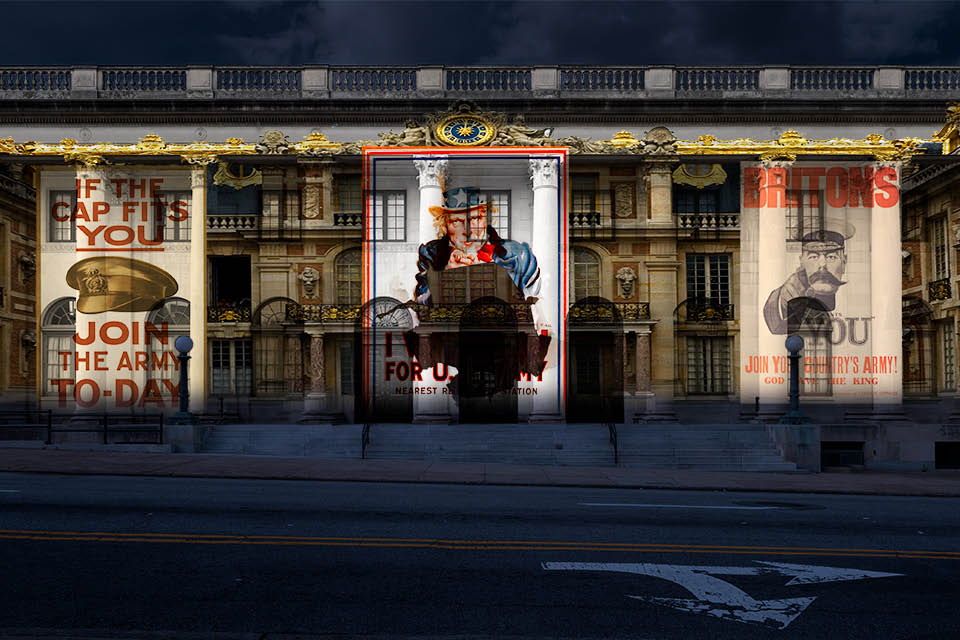
The 20-minute cycle will loop continuously, accompanied by an original sound composition, a first for the WSLP. Jason O’Neal of Alpharetta, Ga., is the sound designer.
The six lighting designers have been working on the project for a year, says Aiden Marshall, who is from Chapel Hill. “We did tons of research into what caused the war and who were the allies,” he says. “We realize war is a cycle, it’s a wheel that keeps turning. It’s important to remember WWI was labeled ‘The War to End All Wars.’ The lighting project reminds us how and why it was so unequivocally not that.”
Coates created WSLP 10 years ago to “powerfully demonstrate the importance of light as an artistic medium in our urban contexts.” His students have lit and projected images onto buildings including the Stevens Center, the Pepper Building, First Baptist Church and the Hall of Justice. They have used lighting to explore movement through the Cherry Street tunnel and along the Strollway from downtown through Old Salem. And they’ve invited the public to explore lighting on the inside and outside of large inflatable structures.
“When we settled on the WWI theme, it seemed natural to return to the Millennium Center, which was built during that era,” Coates said. “The neo-classical revival-style façade lends itself to the type of storytelling we wanted to do this year.”
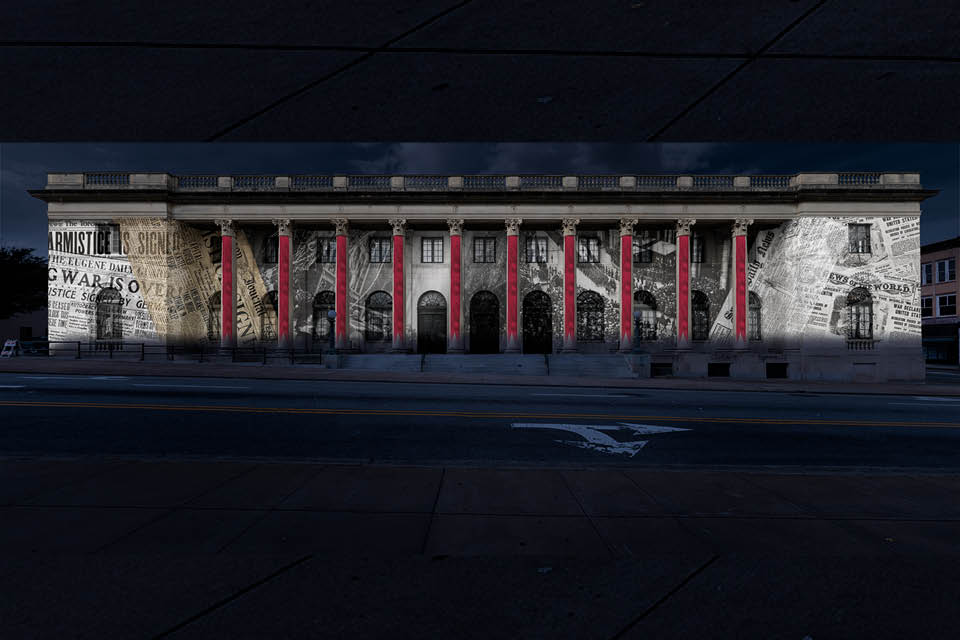
Built in 1906 as a post office and federal building, the Millennium Center is now a privately owned event center.
Funding for WSLP is provided by Suzanne and Gilbert Mathews, owners of Lucifer Lighting. The company based in San Antonio, Texas, precision engineers lighting fixtures that make it easier for people to see, appreciate and experience special things and places.
“The Mathews have a passion for art, design and community,” Coates said. “They wanted to contribute to a UNCSA project directly related to lighting, and this is what we created 10 years ago. We are profoundly grateful for their continued support.”
Additional lighting designers for the project include Olivia Doniphan of Johns Island, S.C.; Joe Seagle of Columbus, N.C.; Tyler Frey of Durham; and Henry Wilen of Palo Alto, Calif. Courtney Serber of Rural Hall, N.C., is production electrician.
April 10, 2018
